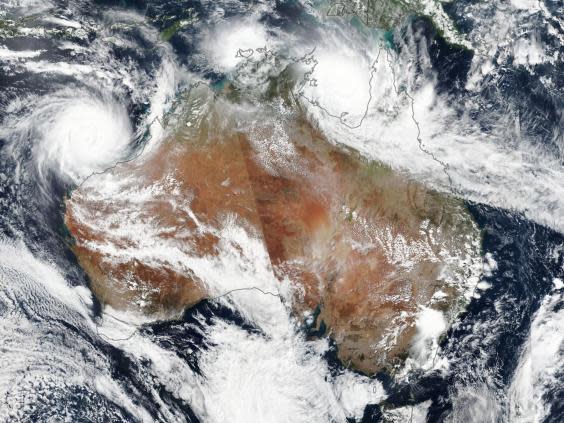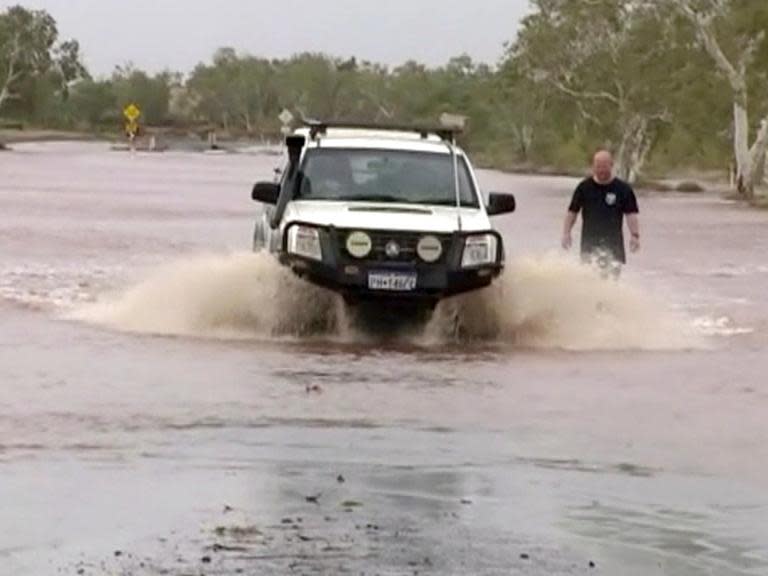Cyclone Veronica: Second cyclone in 48 hours smashes Australia coastal regions
A second cyclone in 48 hours lashed coastal areas of Australia with heavy rain and fierce winds.
Residents on the country’s northwest coast were warned they would have to shelter for several hours as slow-moving Cyclone Veronica settled near Port Hedland, in Pilbara, on Sunday evening.
While it is no longer expected to make landfall, the cyclone has led to winds of up to 136mph and flooding.
Cyclone Veronica has been downgraded from a category 3 storm, on a scale in which 5 is the strongest, to category 2.
It is expected to continue to move west away from the coast and weaken below cyclone strength late on Monday, Australia’s Bureau of Meteorology said.
About 60,000 people live in the area most affected by Veronica. The iron ore mining region is said to be generally well prepared for cyclones which frequently lash its coast.
Veronica came just a day after category 4 Cyclone Trevor hit a remote part of the Northern Territory coast on Saturday, about 1,000 miles to the east of the Pilbara region.

More than 2,000 people were evacuated from Northern Territory coastal areas in Trevor’s path but have since begun moving back home.
A red alert that warns residents to find shelter and brace for destructive winds remained in place in parts of the Pilbara region, but the warning was expected to be lifted on Monday.
There have been no reports of injuries or major structural damage from the two major cyclones but damage assessment had only begun on Monday.
Roof and tree damage has been reported at towns in the Pilbara region.
Cyclones are frequent in Australia’s tropical north but rarely claim lives – however two large storms such as Trevor and Veronica hitting on successive days is rare.
James Ashley, a senior forecaster from Australia’s Bureau of Meteorology, said Veronica was unique because of its slow speed, which brought a long danger period.
He said on Sunday: “We are expecting a prolonged period – 12 hours or more – of destructive winds near the core of the cyclone.”

 Yahoo News
Yahoo News 

